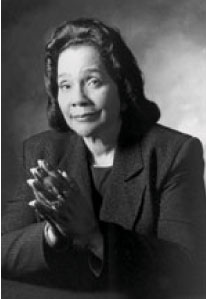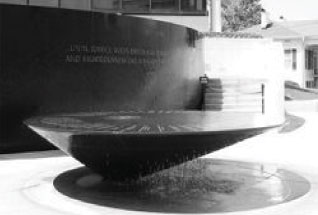The Legacy of & Memorial to Dr. King
Dr. King was assassinated on April 4th, 1968, but his legacy is enduring. He was identified in a 2005 poll as the third greatest American of all time. Civil Rightsmovements for the past five decades have been modeled on his leadership and he continues to be an inspiration to people worldwide.
 |
|
|
Coretta Scott King |
King's wife, Coretta Scott King, was a leader both during his life and continued to be active in matters of social justice and civil rights until her death in 2006. The same year Martin Luther King was assassinated, she established the King Center in Atlanta, Georgia, dedicated to preserving his legacy and the work of championing nonviolent conflict resolution and tolerance worldwide. She was active in numerous social justice movements including the anti-apartheid movements of the 1980s, animal rights, women’s rights and was a leader of merging the civil rights movements of people of color and lesbian, gay and bisexual people.
Despite the anger of many religious leaders, Mrs. King called on the civil rights community to join in the struggle against Homophobia and anti-gay bias. "Homophobia is like racism and anti-Semitism and other forms of bigotry in that it seeks to dehumanize a large group of people, to deny their humanity, their dignity and personhood", King stated. "This sets the stage for further repression and violence that spread all too easily to victimize the next minority group."
Martin Luther King’s children have also been active in numerous social justice movements. Dexter King served as the King Center's president until 2004 and Martin Luther King III is currently the president.
 |
|
|
The Civil Rights Memorial in Montgomery, AL |
Daughters, Bernice & Yolanda King, have both spoken worldwide regarding social justice and have been involved in numerous movements.
Dr. King’s likeness and words are utilized in many places to call for justice and his legacy and that of other leaders is memorialized around the world. Notably, in 1989, a Civil Rights Memorial was dedicated in Montgomery, AL by the Southern Poverty Law Center.
The Civil Rights Memorial, designed by Maya Lin (who also designed the Vietnam Veterans Memorial), was inspired by Dr. King's quotation “... we will not be satisfied until justice rolls down like waters and righteousness like a mighty stream. ...", from the I Have a Dream speech. The table is etched with the names of the 40 people who died between 1954 and 1968 in the struggle for civil rights and the wall behind the table is etched with the quote. Water runs smoothly over both the table and the wall.
 |
|
|
Location of the King Memorial in Washington, DC |
In 1996, Alpha Phi Alpha fraternity was authorized by the US Congress to pursue the creation of a national monument honoring Dr. King. The memorial will be only the second dedicated to a non-president in the area of the National Mall. It was designed by a San Francisco based firm and the groundbreaking ceremony was held on November 13th, 2006.
The website for the memorial states, “This memorial is not designed to be experienced in a single way with one single message, but rather it is to have a broad accessibility, appealing to all of the senses with diverse, repetitive and overlapping themes.” It uses the natural elements of water, stone, and trees to represent the themes of justice, democracy and hope.
 |
|
|
A Rendering of the King Memorial |
Niches at the monument will be dedicated to others who gave their lives to the movement. The website goes on to say, “In deference to the unfinished nature of the movement, a random number [of niches] will be left open and incomplete, allowing additional niches to be dedicated at a later point in time. These semicircular nave-like spaces are intended to engage personal contemplation and quiet reflection, and will be directly accessible from the upper walkway. Each space will be hewn from rock, with rough edges on the outside, and smooth stone on the inside ("rough places made plain").”
Click here for more information about the memorial.
Download printable version





